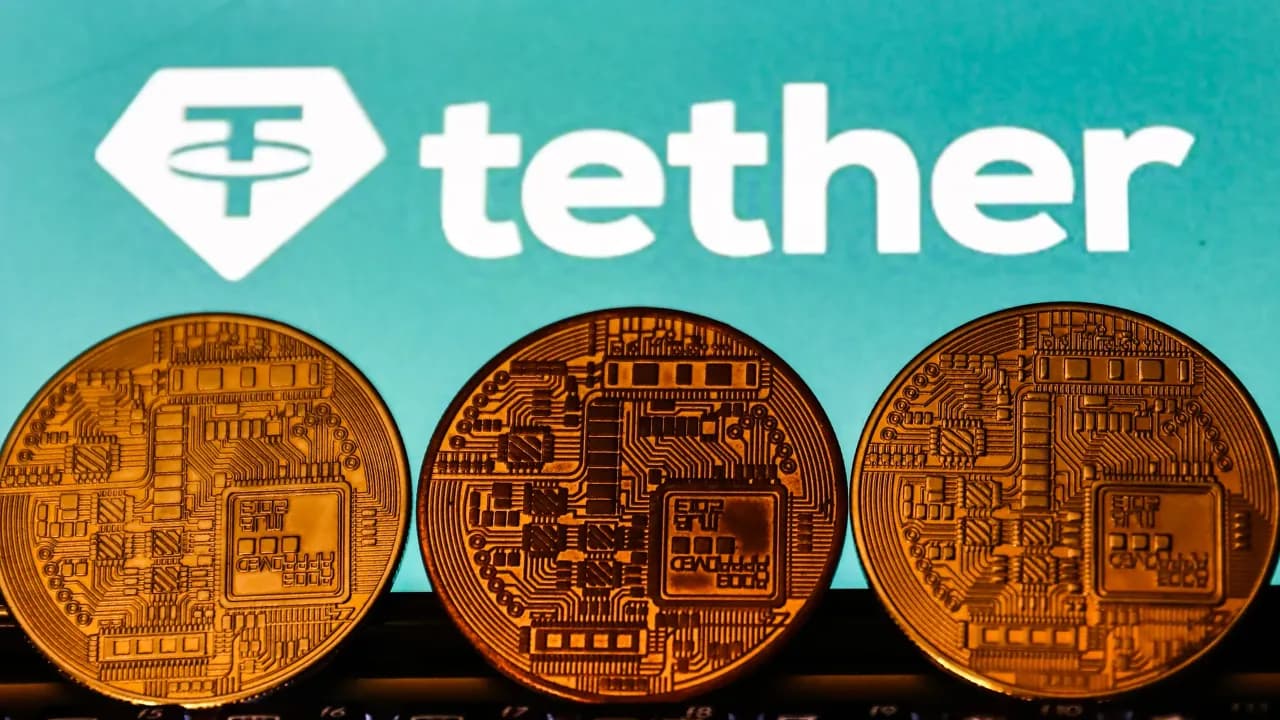S&P Global said the quality of USDT’s reserves has deteriorated over the past year.
- S&P Global on Wednesday downgraded Tether’s USDT to ‘weak’ from ‘constrained’.
- It noted that high-risk assets now make up nearly a quarter of Tether’s reserves, up sharply from last year.
- The company said Tether’s overcollateralization margin has narrowed as exposure to Bitcoin has increased.
Tether’s growing reliance on Bitcoin (BTC) pushed S&P Global on Wednesday to cut USDT (USDT) to ‘weak’ from ‘constrained’, its lowest rating.
The agency said Bitcoin now makes up a larger portion of reserves than the stablecoin’s safeguard margin allows, increasing the risk that USDT may not be fully backed if crypto markets continue to fall. S&P added that growing exposure to volatile assets, like Bitcoin, and ongoing disclosure gaps now pose a material risk to the USDT’s reserve quality.
Crypto Market Volatility
Bitcoin’s price recovered to around $89,600 on Wednesday, up 2% in the last 24 hours. On Stocktwits, retail sentiment around the apex cryptocurrency remained in ‘neutral’ territory over the past day, accompanied by ‘high ‘levels of chatter. BTC has fallen from an all-time high of over $126,000 in October to as low as $81,000 earlier this month. BTC’s price is currently 28.70% below its October peak.
Meanwhile, retail sentiment around USDT dropped to the ‘extremely bearish’ zone from ‘bearish’, with chatter at ‘normal’ levels. USDT is the largest and longest-running stablecoin. According to DeFiLlama data, it has a market cap of roughly $184 billion, more than double USD Coin’s (USDC) $74 billion as the second-largest stablecoin in the market.
S&P Flags Rising Risk Exposure to Bitcoin
In its assessment, S&P Global said Bitcoin now represents 5.6% of USDT in circulation, exceeding the 3.9% overcollateralization margin implied by Tether’s latest reserves. That means the reserve buffer can no longer absorb a meaningful decline in Bitcoin’s value. A drop in Bitcoin, combined with weakness across other high-risk holdings, could reduce overall reserve coverage and potentially leave USDT undercollateralized, the firm noted.
The agency said its rating reflects “persistent gaps in disclosure” and the expansion of riskier exposures across the reserve portfolio. These assets include Bitcoin, gold, secured loans, corporate bonds, and other investments that carry credit, market, interest-rate, and foreign-exchange risks.
S&P also pointed to weaknesses in transparency around reserve management, the absence of asset segregation if Tether becomes insolvent, and limitations around USDT’s primary redemption mechanisms.
Reserve Breakdown Shows Shifting Mix
In Tether’s the latest quarterly disclosure from September, the company reported $181.2 billion in reserves backing $174.4 billion USDT, for a collateralization ratio of 103.9%, down from 105.1% a year earlier.
Higher-risk assets represented 24% of total reserves, up from 17% a year earlier. S&P said the reduced buffer leaves the stablecoin more exposed to market volatility, particularly given the limited detail provided about these positions.
S&P pointed out that the most notable shift was the increase in Bitcoin exposure. In September 2024, Bitcoin represented 4% of USDT in circulation, below the 5.1% overcollateralization margin at the time. By September 2025, that share had risen to 5.6%, exceeding the updated 3.9% margin.
S&P said the stablecoin assessment could improve if Tether reduces its allocation to such high-risk assets.
Read also: Bitcoin, XRP, ADA Struggle Ahead Of Thanksgiving – Analyst Warns There’s No Clear Catalyst For Q4
For updates and corrections, email newsroom[at]stocktwits[dot]com.<
